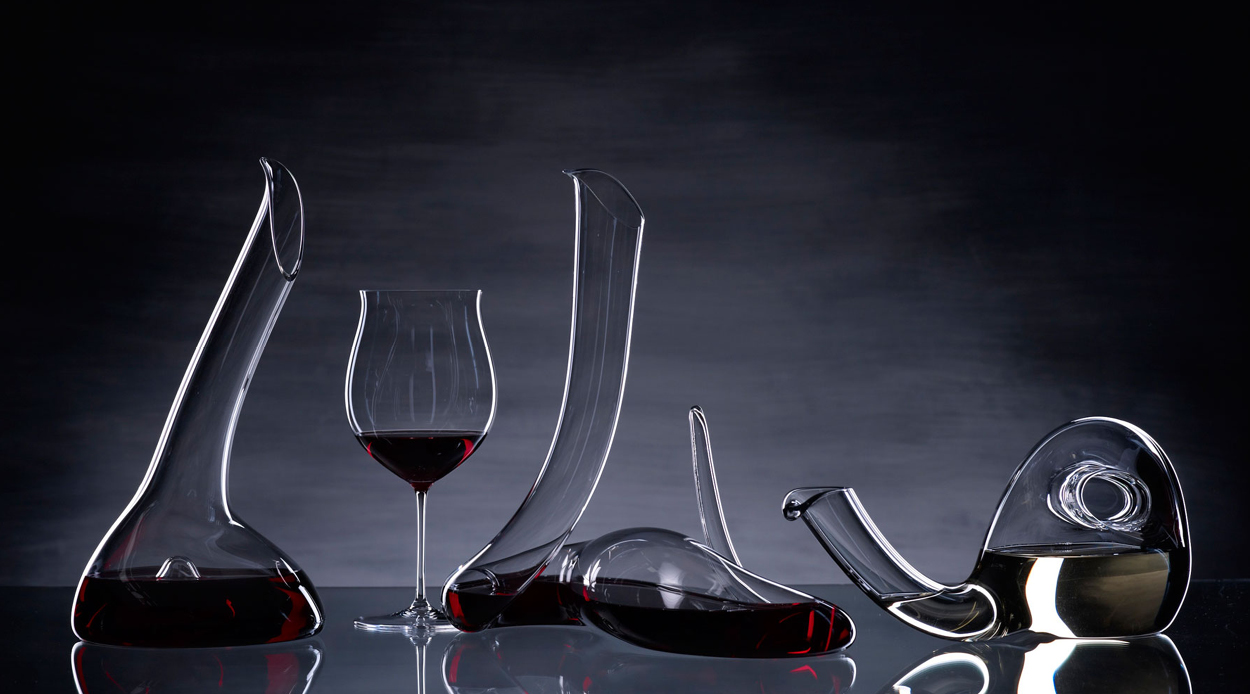The act of enjoying a heart-warming glass of red wine is something that is universal but the world of wine can feel like a web of senseless phrases and confusing processes that aren’t always easy for us to get our heads around. After a recent query from a friend who really had no clue what a wine decanter was, nor any idea how she should be using one, I decided to dive into why decanting was seen as integral to the serving of certain wines, as well as how to do it properly and which vessels to use.
Why should we decant?
There are two main reasons why decanting wine has become common practice. The first is because it helps to filter out sediment from the wine, resulting in a clearer, sharper taste and more pure colour. For older bottles of red wine or port, this can prove imperative where the colour pigments have bonded with tannins and fallen out of the solution. Sediment can result in a wine sporting a cloudy colour, or gritty, bitter taste. Ironically, sediment in a bottle of wine can be an indicator of high-quality, which is another reason why more expensive drops are more frequently decanted before serving.
The other reason for decanting has to do with its aeration properties. Though a topic of debate (apparently) in the wider wine community, the central idea is that giving some wines exposure to oxygen will open up their flavour profiles, making them more vibrant, especially with wines that are highly tannic or full-bodied.
How to decant?
1. Choose the wine you will be serving in advance, and stand it upright for at least 24 hours — this will send the sediment to collect at the bottom of the bottle
2. Take out your decanter of choice (see below for some of our favourites)
3. Remove the cap and cork from the bottle of wipe and wipe its neck clean
4. Hold a light under the neck
5. Begin to pour the wine into the decanter slowly, without stopping at all until you reach the end. The emptier the bottle gets, the slower you should pour.
6. Stop when you see the sediment reach the neck of the bottle
7. You may serve straight away if you wish, otherwise, the rule of thumb is that older, more delicate wines should be served after sitting for around 30 minutes or so, while more full-bodied varieties can sit for closer to an hour.
Feel free to experiment with decanting (if you have a couple of bottles you don’t mind experimenting with) to familiarise yourself with the process and its results. Extreme decanting using specific aeration tools and often lasting much longer than an hour should only really be undertaken by the connoisseurs, but if you want to try your hand at it too, by all means.
Which decanters are best?
When it comes to the question of which decanter to buy, it certainly isn’t one size that fits all, but there is one brand we would always turn to without a second thought. Riedel, one of the world’s foremost makers of stemware and glassware has a wide range, even creating particular types of decanters to suit different drops (although if you’re just starting out, there’s no need to get too specific). Available locally from The Studio of Tableware, the latest Riedel decanters are set to be the perfect sculptural centrepieces for your next dinner party — and these are our favourites.







